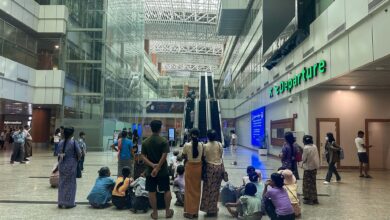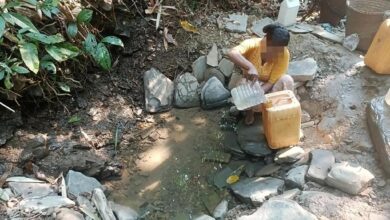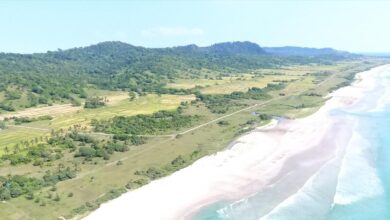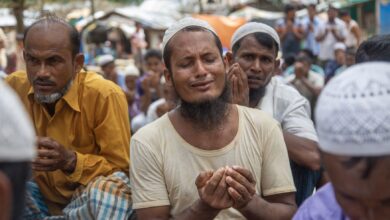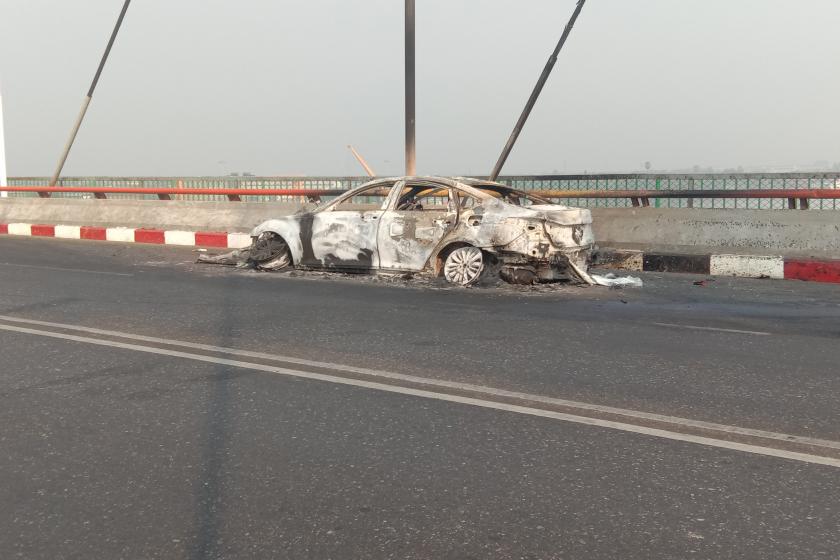
Much of Hlaing Tharyar, a township on the western outskirts of Yangon, is eerily quiet these days. Most shops are closed, and many streets are empty. Here and there, black smoke rises into the sky from burning tires, and at most intersections, barricades serve as a reminder that this is an area under siege.
Thousands of Hlaing Tharyar’s inhabitants have abandoned it for the relative safety of their hometowns. Most are migrants from rural areas, drawn to the factories of the township’s industrial zones. Now that it has turned into more of a war zone, there is little reason for them to stay.
The worst day was last Sunday, but the killing continued well into the week. Between March 14 and March 18, a tide of violence unleashed by Myanmar’s junta claimed 58 lives in Hlaing Tharyar; another 53 were injured, many of them seriously, when the regime mounted an all-out assault that marked its most determined effort yet to crush protests demanding an end to its rule.
By Tuesday, after two days of relentless attacks on unarmed civilians, Hlaing Tharyar was largely subdued. Only one or two motorcycles could be seen on its streets, even as diehards continued to build defences against the regime’s war machine.
To the south, near the Bayint Naung bridge, young protesters were piling up sandbags to prevent another wave of military vehicles pouring in to terrorize the local population.
But last Sunday, it was the Aung Zeya bridge to the north that was used to bring a convoy of about 50 army trucks full of soldiers across the Hlaing river from Insein township, in the first sign that a major offensive against defenceless civilians was about to begin.
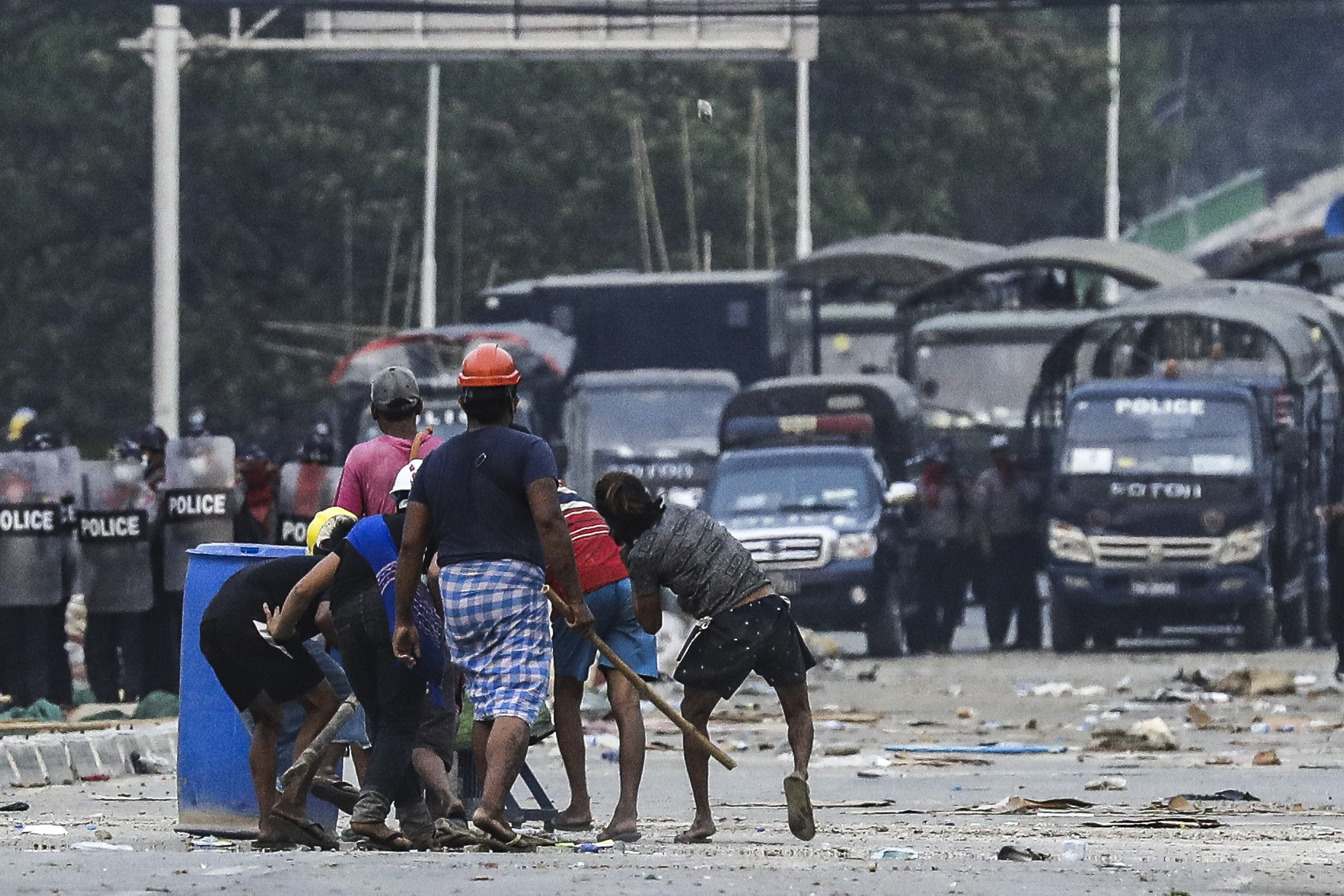
Shooting at shadows
A week later, the memories of what was to follow are still fresh in the minds of those who witnessed the scenes of carnage, but also strangely unreal, like a nightmare that still has the power to terrify, even in the light of day.
Anyone who enters Hlaing Tharyar’s residential wards is now regarded with suspicion. Those who remain after the exodus of recent days are wary of strangers, as fear lingers even after the worst of the bloodshed has passed.
“How are people supposed to feel safe? They have been shooting at every shadow day and night,” said a motorcycle courier who spoke on condition of anonymity.
The violence didn’t begin on Sunday. Like other places, Hlaing Tharyar had faced a number of crackdowns after weeks of protests. But on Saturday, there was a sense that things were about to get much worse, and the sight of so many military vehicles crossing the bridge, captured on videos that spread quickly on social media, only confirmed those fears.
“There were crackdowns before March 14. But the military only began to arrive in large numbers and start shooting from all sides on that day. A lot of people were killed,” said one witness.
The shooting was not directed just at protesters. Anyone who came anywhere near where the troops took up position was fair game. Mostly, this meant near township or ward administrative offices, which served as their bases.
“I passed by the administrator’s office on my motorcycle at around 3pm. They shot at me from inside. Luckily, the bullet just whizzed past behind my head. We quickly learned to avoid military trucks at all costs,” said another local resident.
Others who managed to avoid being shot were not unscathed by what they saw.
“They started shooting at around 1pm. They were shooting non-stop. Five military trucks took up position at the township administrative office. One person was shot in the head, and another in the stomach. They fell to the ground right in front of me,” one person recalled of his experiences on March 14.
It was impossible to help the wounded or collect the bodies of the dead, he said, because the soldiers kept firing at anyone who approached or so much as moved.
By the time the killing stopped, the death count on Sunday alone was at least 40, according to a local social worker.

Watching in darkness
Martial law was declared in Hlaing Tharyar and neighbouring Shwepyitha township late Sunday, to be followed by four other Yangon townships the next day. But Hlaing Tharyar remained the worst-hit location, racking up more deaths in a single day than any other place in the country after weeks of escalating violence.
For now, the gunfire has stopped. But the regime forces who still occupy Hlaing Tharyar aren’t giving residents any rest. To keep up the pressure, they continue to bombard the area with the sounds of warfare, as a constant reminder of their presence.
Every night, from around 10pm until 2am, stun grenades go off outside people’s homes. Few can sleep knowing that the sound could easily change to something even more ominous if the soldiers suddenly start opening fire with live ammunition again.
“That was a sound bomb,” said one woman, listening closely to an explosion not far away. “They use them every night. We can tell them apart from other weapons now.”
Not everyone stays behind closed doors at night. Some, mostly young or middle-aged men, guard their streets from safe corners so they can warn others of any approaching danger. They stay close to their barricades, and when military trucks on patrol come near, they turn out every light and retreat into darkness. As they watch the trucks go by, they stay completely still, lest any sign of life invite a barrage of bullets.
But soldiers are not the only ones who inspire fear and anger. There are also those who watch others and inform on them to the police—strangers who make it especially dangerous to stay out after dark.
“They have been killing innocent civilians, so we have to be prepared to defend ourselves with knives. But informers have been telling the police about this, and so we are targeted,” one local resident explained.
This has created such an atmosphere of distrust that it has become unsafe to venture far beyond one’s own immediate neighbourhood.
“Now residents of one ward cannot enter another ward after 6pm. If you go somewhere you don’t belong, you will be cut down. We really can’t trust anyone in Hlaing Tharyar, because it is full of people from different parts of the country,” the resident added.
Factories in flames
Many believe that Hlaing Tharyar has been singled out for especially brutal treatment because of the fires that broke out at a number of Chinese-owned factories in the township’s industrial zones. But residents reject claims that civilians were responsible for these blazes.
“There are rumours that people living here set those factories on fire. But they are surrounded by troops who will shoot at anyone who comes near. How could we possibly go around torching factories? It’s obvious if you just think about it,” said one woman who lives in the area.

But thinking straight is easier said than done under such extreme circumstances. When machete-wielding neighbours on guard duty start interrogating you at four o’clock in the afternoon, you begin to wonder if the world hasn’t gone mad.
That’s why it comes as no surprise that many have decided to leave, by any means available. Every vehicle imaginable, from motorcycles to Hijet microvans and pickup trucks, can be seen loaded up with all the modest belongings of working-class families who only want to go to bed at night without having to worry about the horrors they might wake up to in the morning.
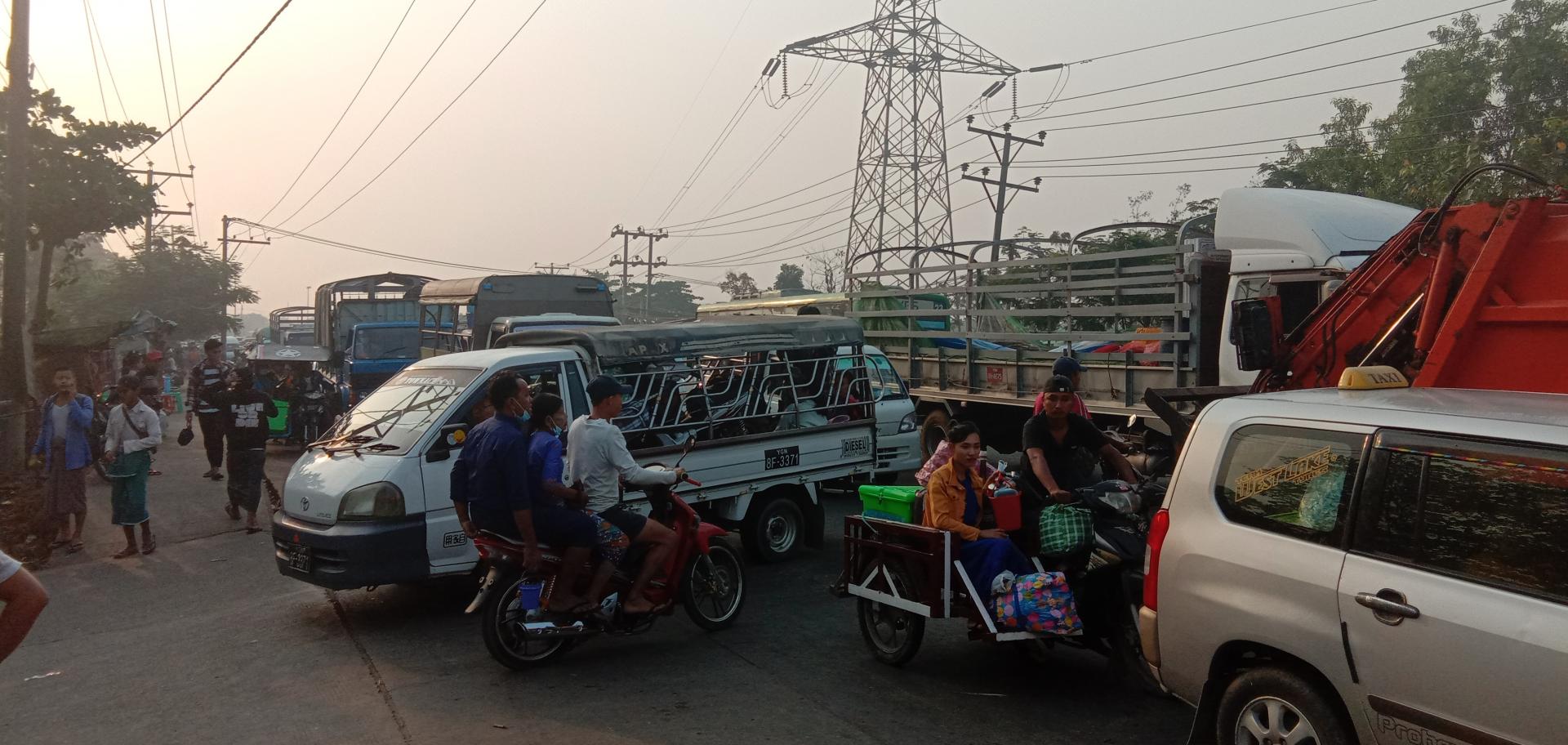
“People are afraid to live here now. Some left because they lost their jobs and some because they just don’t feel safe anymore. They started going back to their hometowns last weekend, and you can see for yourself that many are still fleeing,” said one resident who has so far stayed behind.
With their hopes of making better lives for themselves destroyed, and with uncertainty about the future growing deeper with each passing day, the people of Hlaing Tharyar are now in survival mode. What this will mean for the struggle to end military rule remains to be seen. But after bearing the full force of the regime’s fury, the township’s residents can hardly be blamed for beating a hasty retreat.
